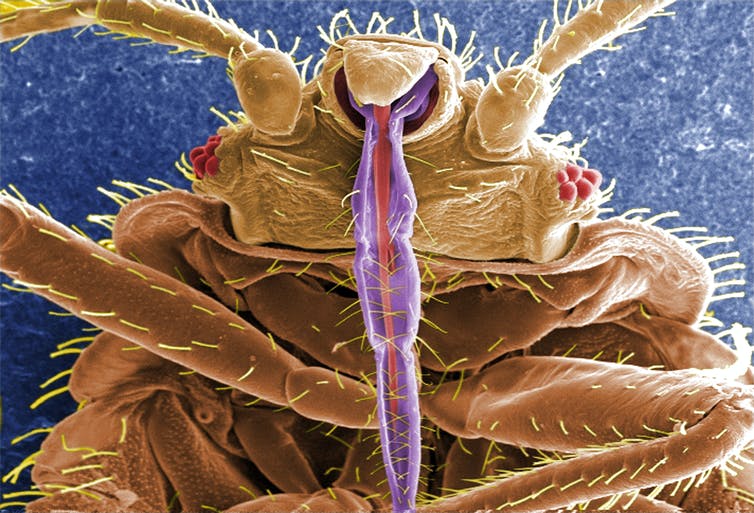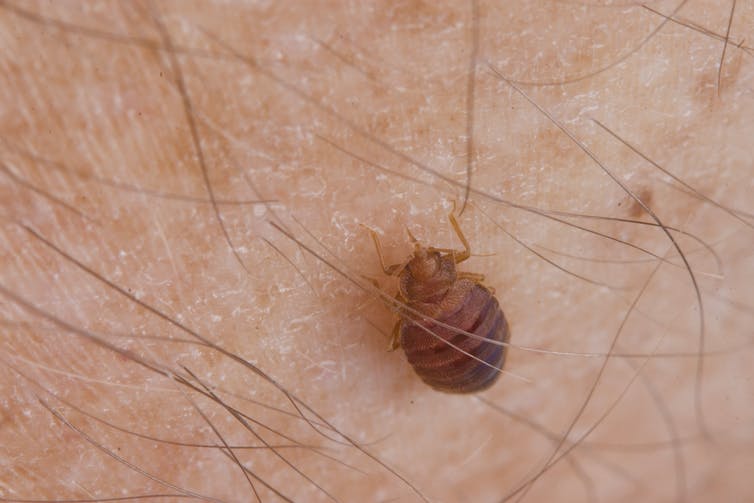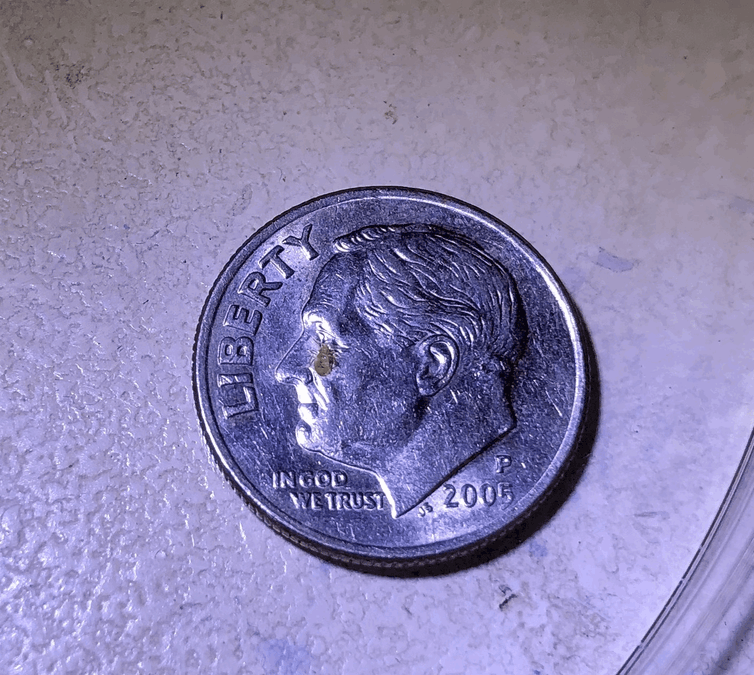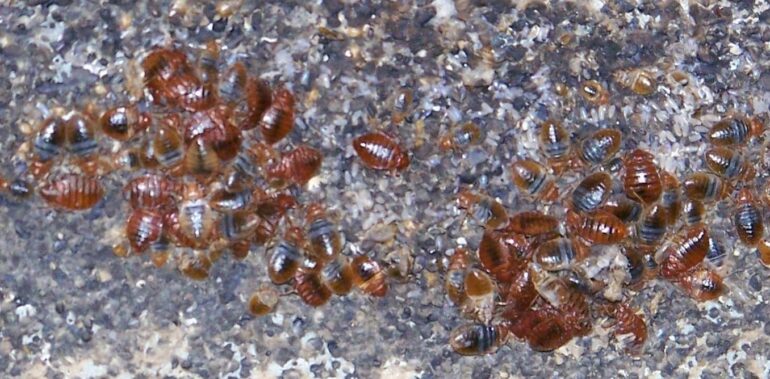Bed bugs are back with a vengeance. After an absence of around 70 years, thanks to effective pesticides such as DDT, they’ve been popping up in fancy hotels, spas, department stores, subway trains, movie theaters – and, of course, people’s homes.
I’m a public health entomologist. In the course of my work, I’ve studied these little bloodsuckers, even letting bed bugs feast on my own appendages in the name of science. No one likes dealing with bed bugs – and there are ways to minimize your chances of needing to.

Colorized scanning electron microscopic image reveals the underside of a bed bug, including the proboscis (purple) and two eyes (red).
CDC/Janice Haney Carr, CC BY
Know thy bed bug enemy
The common bed bug, Cimex lectularius, has been a parasite of humans for thousands of years. Historically, these tiny bloodsuckers were common in human dwellings worldwide, giving the old saying “sleep tight, don’t let the bed bugs bite” real meaning. They had nearly disappeared in developing countries until the mid-1990s, when they began making a comeback because of restriction or loss of certain pesticides, changes in pest control practices and increased international travel. In many areas around the world, they are now a major urban pest.

A bed bug extends its beaklike proboscis to feed on human blood.
Jerome Goddard
Adult bed bugs are less than a quarter-inch long (about 5 mm), oval-shaped and flattened, resembling unfed ticks or small cockroaches. Tucked backward underneath their head they have a long proboscis – a tubular mouthpart they can extend to take a blood meal. A bed bug needs only between three and 10 minutes to consume up to six times its weight in blood in a single meal.

A yellowish-white first-stage bed bug nymph is tiny.
Jerome Goddard
Adults are reddish brown, while the babies are extremely tiny and yellowish-white in color. They hide in cracks and crevices, generally within a few feet of a bed, coming out only to feed on an unsuspecting host. Then they run back to their hiding places, where they mate and lay eggs.
Houses can become infested with thousands of the little bloodthirsty pests in the mattress and box spring, where they leave telltale black fecal spots. In severe infestations there may be thick feces, hundreds of shed skins and eggs several millimeters thick.
Biggest health impacts may be psychological
Bed bugs have been suspected in the transmission of more than 40 disease organisms, but there is little evidence bed bugs transmit human pathogens, with the possible exception of the microorganism that causes Chagas disease. Extreme infestations can, in rare cases, lead to blood loss severe enough to cause anemia.
Their principal medical impacts are related to nuisance biting and the associated itching and inflammation. The most common bite reactions are itchy red spots at…



